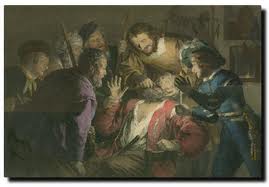The science of orthodontics and braces has come a long way in a very short period of time. But looking through the history books of this practice and braces, you will find that has been a longer process than most people think.
Adjusting for History
“Braces” and the fascination with the perfect smile aren’t a modern phenomenon. Technological advancements may have come thick and fast over the course of the last 100 years or so, but the practice of adjusting teeth has been around for quite some time and the history of braces is a long one.
Ancient Egyptians
Egyptian mummies have been discovered with metal bands wrapped around teeth. And where we now use wire to close gaps, it is believed that catgut once performed that task.
Etruscans
Archaeological finds have shown that how these early Italians looked was as important to them as is us today. So as to look good for their time in the hereafter, these early Italians devised the first bridge (made out of gold) to maintain spacing and to stop the teeth from collapsing.
Romans
Aulus Cornelius Celsus pioneered the use of finger pressure, recording that regular application of pressure did result in movement and realignment. The Romans took it a step further and devised a rudimentary version of modern ligature wires using gold wire to try and close gaps between teeth.
Growing Support
The practice of realigning teeth and jaws went dark for quite some time, and “birth” of modern orthodontics only came about in the mid-18th century.
Pierre Fauchard
In 1728, this French dental surgeon penned his book Le Chirurgien Dentiste (The Surgeon Dentist) which has a chapter specifically about orthodontics and teeth straightening. He also invented the Blandeau, a horseshoe-shaped arch expander made from precious metals
Ettienne Bourdet
Another French dentist and dentist to the Royal Court, his The Dentist’s Art (1757) was another written work that focused a chapter on straightening and dental appliances. Perfecting the Bandeau, he also championed premolar extraction to help against crowding.
John Hunter
Meanwhile, over in Scotland, this surgeon described dental anatomy (The Natural History of the Human Teeth) giving teeth their names, as well as describing dental pathology (A Practical Treatise on the Diseases of Teeth) in the mid- and late-1700s.
Orthodontics Gets it Bite
There were many other notable contributors to the science of orthodontics (click here for a list of them) but the men most credited with guiding Orthodontics to where it is now are John Nutting Farrar, Norman W. Kingsley and Edward H. Angle
J.N. Farrar
An accomplished dentist and brace appliances designer, he was also the first to suggest the use of mild force in specifically timed intervals instead of permanent pressure to move teeth. He also wrote two volumes entitled A Treatise on the Irregularities of the Teeth and Their Corrections.
Norman W. Kingsley
This dentist was a renaissance man of sorts being a expanding on his dental expertise with art, sculpting and writing. And although he wrote articles from 1858 on, it was his 1880 book, Treatise of Oral Deformities, that is credited as having probably one of the biggest influences in the emerging science of orthodontics. He also devised a form of headgear that addressed malocclusions by moving the upper front teeth
Edward H. Angle
He introduced the classification system (still used today, in fact) that guided dentists into being able to describe malocclusions and how crooked teeth were. In 1901 he opened the first school of orthodontics as well as organizing the precursor to the American Association of Orthodontists (AAO), the American Society of Orthodontia. He also used photography to document the work done. He also was involved in furthering appliances through design as well as modification.
And Here We Are Today
Braces (but not exactly as we know them now) were used in the early 1900s and consisted of individual metal bands connected by a wire, which was then tightened. And as stainless steel only come into prominence in the 1970s, any number of materials were used in teeth straightening. Materials included gold, silver, zinc, copper, ivory and even wood (depending on availability and budget).
Thankfully, materials and application have come a long way since then. Plastic, ceramic and nickel-titanium have replaced those materials, and these innovations—as well as their placement and size—have made wearing braces a more pleasant experience. The introduction of Invisalign’s clear plastic trays in 2000 now means that braces can even be removed.
Orthodontic Associates look forward to using the our own history of success as well as our nine convenient orthodontic offices in Baltimore to give you the perfect smile you have always dreamed of. Contact us to see how we can make you smile.



